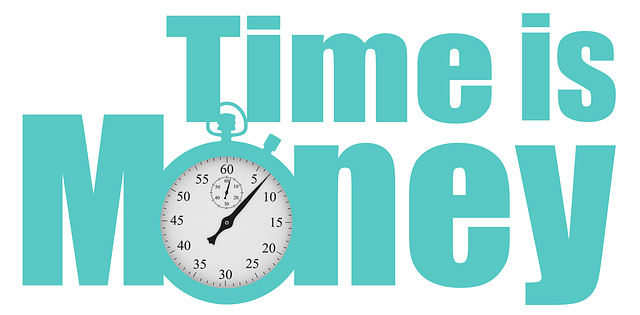Table of Contents
Time management is crucial in programming, where efficiency and productivity are essential. For programmers, understanding how to optimize work during AM and PM hours can make a significant difference. This article explores How to Manage Time in Programming With AM and PM innovative strategies tailored specifically for programmers, combining practical tools and advanced techniques to help you manage time effectively.
Understanding AM and PM in Time Management

AM (Ante Meridiem) refers to the time from midnight to noon, while PM (Post Meridiem) refers to the time from noon to midnight. Programmers can use these blocks of time strategically, leveraging energy levels and productivity peaks to accomplish their goals.
Programming-Specific Scenarios for AM and PM Scheduling
- Debugging vs. Brainstorming:
- Use AM hours, when your mind is fresh, for challenging tasks like debugging complex code.
- Reserve PM hours for brainstorming or creative coding tasks, as mental fatigue may slow technical precision.
- Managing Time Zones:
- For global teams, AM hours can be used to align with overseas colleagues, while PM hours can focus on individual coding tasks.
- Tools like World Time Buddy can help synchronize tasks across multiple time zones.
- Coding Sprints:
- Allocate AM hours for writing and testing code, ensuring a productive start to the day.
- Use PM blocks for reviewing code, resolving issues, or conducting peer reviews.
Smart Productivity Hacks for Programmers
- Leverage Automation Tools:
- Use CI/CD pipelines to automate testing and deployment.
- Integrate Git hooks to manage repetitive tasks effectively.
- Keyboard Shortcuts:
- Learn shortcuts for your IDE (e.g., Visual Studio Code, IntelliJ IDEA) to save time.
- Use snippets for frequently written code structures.
- Deep Work Philosophy:
- Dedicate uninterrupted blocks of time to deep work during AM hours.
- Minimize distractions by turning off notifications and using apps like Forest or Freedom.
Advanced Techniques for Programmers

- Use of Version Control Systems:
- Tools like Git can help track changes and streamline collaborative efforts.
- Regular commits prevent code conflicts and save time during debugging.
- Integration with Project Management Tools:
- Use platforms like Trello, Jira, or Asana to plan AM and PM tasks.
- Prioritize tasks using the Eisenhower Matrix or Kanban boards.
- Block Scheduling:
- Work in focused blocks, such as 90-minute intervals, followed by short breaks. This aligns with the Pomodoro Technique.
- Assign specific tasks to AM and PM blocks based on complexity.
Health and Efficiency in Programming
- Preventing Burnout:
- Schedule regular breaks during both AM and PM hours to refresh your mind.
- Incorporate light stretching or quick walks to reduce screen fatigue.
- Maximizing Energy Levels:
- Use AM hours for high-concentration tasks, leveraging morning energy.
- Schedule easier or routine tasks for PM hours when energy levels dip.
- Sleep and Nutrition:
- Prioritize adequate sleep to enhance cognitive performance.
- Maintain a balanced diet and stay hydrated to stay sharp throughout the day.
Tools for Manage Time in Programming With AM and PM
- Time Tracking:
- Tools like Clockify or Toggl can help monitor time spent on specific programming tasks.
- Task Planners:
- Use apps like Notion or Google Calendar to organize AM and PM schedules.
- Coding-Specific Extensions:
- Install productivity extensions like “Code Time” in your IDE to analyze coding patterns and optimize workflows.
Case Study: A Programmer’s Daily Schedule
- AM:
- 7:00 AM – Plan tasks for the day and prioritize.
- 8:00 AM – Debugging session for a critical project.
- 10:00 AM – Code new features with minimal interruptions.
- PM:
- 1:00 PM – Collaborate with team members on project updates.
- 3:00 PM – Review and test the day’s work.
- 5:00 PM – Plan tasks for the next day.
Emerging Trends in Time Management (2025)
- AI-Powered Tools:
- AI-driven platforms like Motion or TimeHero can predict and optimize task scheduling.
- Collaborative Automation:
- Slack bots and team dashboards for real-time AM/PM task updates.
- Data Analytics in Time Management:
- Analyze task data to improve productivity and identify time-draining activities.
FAQs
1. Why is it important to manage time in programming with AM and PM?
Managing time in programming with AM and PM allows you to optimize your energy levels and focus, ensuring high productivity throughout the day.
2. How can programmers handle unexpected interruptions?
Unexpected interruptions can be managed by incorporating buffer time into your schedule and using flexible tools like Trello to adjust priorities.
3. What tools are best for time management in programming?
Tools like Notion, Clockify, and Toggl are excellent for task organization and time tracking. IDE-specific extensions like Code Time can also be beneficial.
4. How does sleep affect time management in programming?
Adequate sleep enhances cognitive performance, making it easier to focus, solve problems, and manage time effectively.
5. What’s the best way to limit distractions during coding?
Use apps like Freedom or Forest to block social media and turn off unnecessary notifications during coding sessions.
Final Thoughts
Effective time management in programming isn’t just about dividing your day into AM and PM blocks. It’s about making intentional, strategic decisions that align with your energy levels and project demands. By integrating tools, leveraging advanced techniques, and maintaining a healthy work-life balance, you can achieve remarkable productivity and enjoy the process of coding. Remember, it’s not about working harder but working smarter.
Happy coding!





